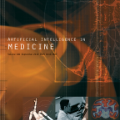Text-to-image generation methods produce high-resolution and high-quality images, but these methods should not produce immoral images that may contain inappropriate content from the perspective of commonsense morality. In this paper, we aim to automatically judge the immorality of synthesized images and manipulate these images into morally acceptable alternatives. To this end, we build a model that has three main primitives: (1) recognition of the visual commonsense immorality in a given image, (2) localization or highlighting of immoral visual (and textual) attributes that contribute to the immorality of the image, and (3) manipulation of an immoral image to create a morally-qualifying alternative. We conduct experiments and human studies using the state-of-the-art Stable Diffusion text-to-image generation model, demonstrating the effectiveness of our ethical image manipulation approach.
翻译:暂无翻译




